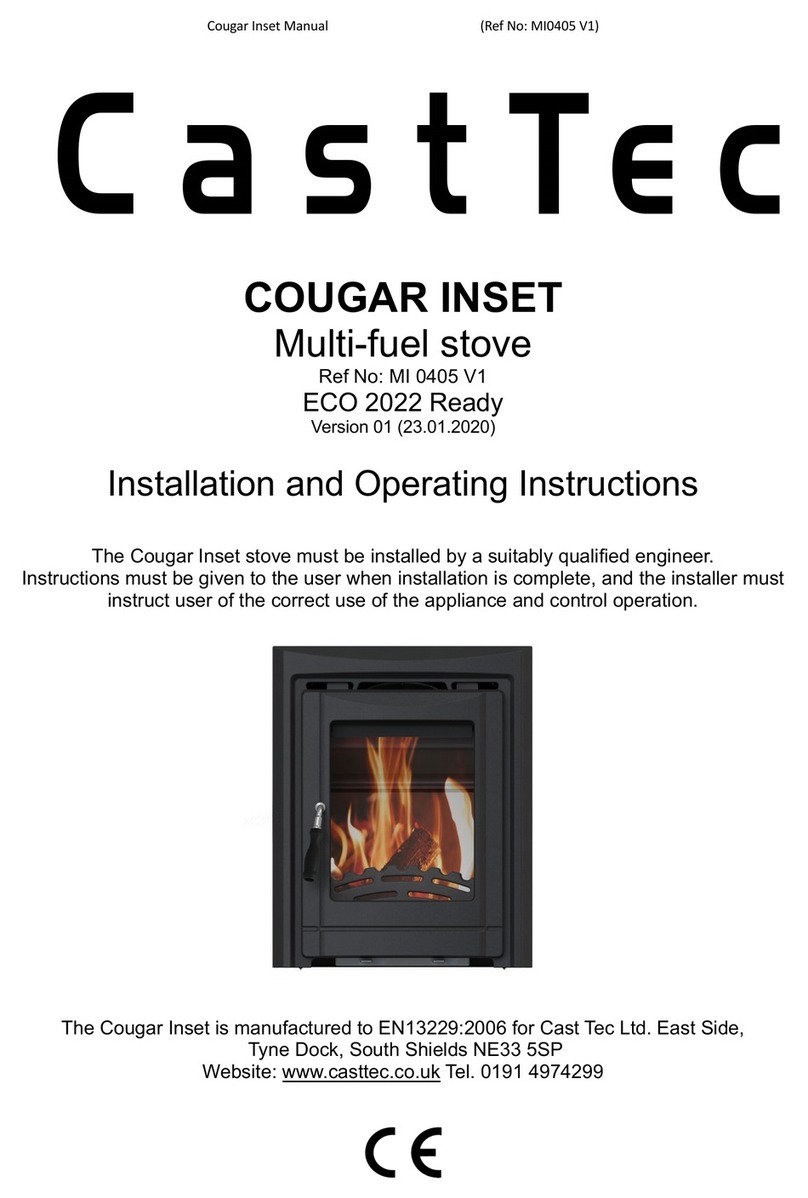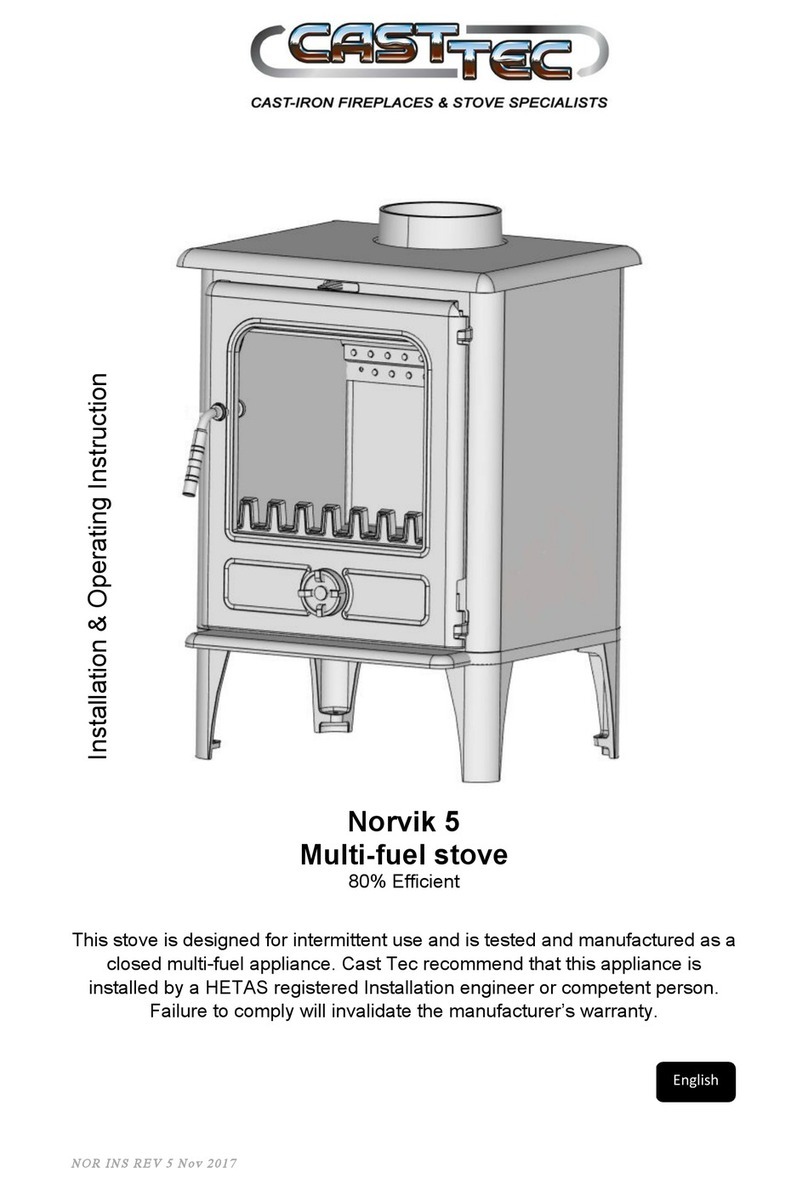
Nevis Edge 5 Manual (Ref No: S107)
2 CastTec Ltd
Table&of&Contents&
THE CLEAN AIR ACT 1993 AMD SMOKE CONTROL AREAS ........................................................................................ 3
PRODUCT SPECIFICATION ....................................................................................................................................... 4
IMPORTANT INFORMATION ABOUT INSTALLATION AND USING THE STOVE ............................................................ 6
UNPACKING & ASSEMBLY ....................................................................................................................................... 7
INSTALLATION OF THE STOVE ................................................................................................................................. 8
MATERIAL CLEARANCES ......................................................................................................................................... 8
FLOOR ............................................................................................................................................................................................ 8
THE CHIMNEY ................................................................................................................................................................................. 9
FUME EMISSIONS ........................................................................................................................................................................... 9
OPERATING INSTRUCTIONS .................................................................................................................................. 10
THE CONTROLS ............................................................................................................................................................................. 10
FUEL ............................................................................................................................................................................................. 11
BEFORE LIGHTING ........................................................................................................................................................................ 11
LIGHTING A WOOD FIRE ............................................................................................................................................................... 11
REFUELING PROCEDURE ............................................................................................................................................................... 12
DE-ASHING THE STOVE ................................................................................................................................................................. 13
GUIDANCE ON SAFE OPERATION .......................................................................................................................... 14
FIRE CAN BE VERY DANGEROUS ................................................................................................................................................... 14
CHIMNEY FIRE .............................................................................................................................................................................. 14
FUMES .......................................................................................................................................................................................... 14
ADVERSE WEATHER CONDITIONS ................................................................................................................................................. 14
MAINTENANCE .................................................................................................................................................... 15
CLEANING ..................................................................................................................................................................................... 15
GENERAL MAINTENANCE ............................................................................................................................................................. 15
STOVE BODY ................................................................................................................................................................................. 15
FIRE ROPE ..................................................................................................................................................................................... 16
CLEANING THE STOVE ................................................................................................................................................................... 16
STOVE GLASS ................................................................................................................................................................................ 16
CHIMNEY ...................................................................................................................................................................................... 16
FAULT FINDING ..................................................................................................................................................... 17
FIRE WILL NOT BURN .................................................................................................................................................................... 17
SOOT BUILD UP ON GLASS ............................................................................................................................................................ 17
EXCESSIVE WEAR ON INTERNAL PARTS ......................................................................................................................................... 17
SPARE PARTS ........................................................................................................................................................ 18
PART LIST ............................................................................................................................................................. 19































